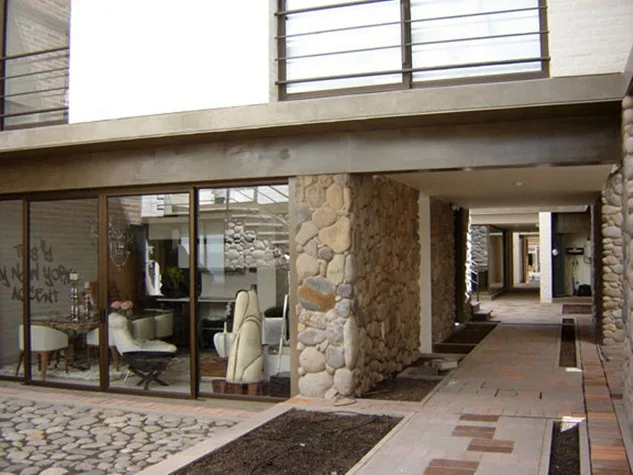Ojos azul hielo

I connect easily with most animals. I set them at ease with body language and various sounds I make with my mouth. Sometimes, I can win over an aggressive dog, sometimes not. I don’t press encounters with animals that exhibit possibly dangerous behaviors. A large animal can hurt you even if it’s simply startled and wanting to exit the current scene. I move and speak in a way that invites the animal to provide me with its own visible or auditory cues of what our interaction may be like.
scene. I move and speak in a way that invites the animal to provide me with its own visible or auditory cues of what our interaction may be like.
In addition, I have very seldom made photographs of “zoo” animals, referencing those animals in captivity and not in the wild in their natural environment. Like wild animals, I too am a hunter. But here in Ecuador, it’s photographs and not lives I take. I prefer natural elements and weather conditions while pursuing my various quarries across a broad range of both cityscapes and landscapes. In the city, it’s the interesting faces, situations and subtle little slices of humanity I carve out with my lenses. But past El Campo, high in the Andes, it’s the animals I meet that receive my attentions. And, they don’t act the same as the ones in captivity I mentioned a moment ago.
There’s not too much to worry about around here when you’re making your explorations. There is nothing local that’s likely to kill and eat you. Panther sitings are reported but I find no scientifically substantiated claims, only the stories. The Andean bear doesn’t seem to be reported in this area either and besides, it’s smaller compared to many bears. But, there are some big deer here and also some llamas that can top 400 pounds. When you’re out and about in the high places, sometimes it gets misty and you come across special things as you ease in and out of the fog banks. Except for the soughing of the wind in the polycarpus and across the paramo, there are no sounds to be heard. But, if you’re not careful with your step and you startle a small herd grazing on some orange chuquiragua flowers at 12,000’, you might hear the llama alarm call. It sounds like a child’s rubber- bulbed bike horn being squeezed repeatedly at a fast cadence. You can’t even imagine that sound can come out of a creature which looks like this.
A slower approach to a herd is always preferred. One reason is, they are less likely to be spooked and hurt you or themselves while trying to haul it to the next province. When at ease, the llamas make a kind of a humming sound that reminds me of very loud cat purring. The cadence and tones are varied, so this is obviously a manner in which they communicate within their family. The llamas broad family, which is that of the Camelidae, has several different animals in it. Another local extant member of that family is the smaller bodied alpaca. I’m hunting with a camera, but I occasionally encounter the scattered remnants of prehistoric man’s stone toolkit along the continental divide. After reading a number of academic papers on the subsistence patterns of ancient man in the Andes, there seems no doubt that these animals were hunted by PaleoAmericans for food and clothing beginning at least 13,000 years ago.
It was pretty cold and drizzly one grey afternoon and I was glad for all my rain gear as I slowly picked my way along some steep ridges among scattered basalt boulders. My camera was on my rapid deployment strap which was slung over my shoulder like a bandolier. I had a green Coral bag over it with a piece of elastic holding it in place. I needed to use something else. The bag made a crunchy sound while I walked that drew attention to my presence. It was wet and that had quieted it somewhat. Off to the right, I heard the magical humming of a llama. I stopped and called softly back with a few loud purrs which were immediately returned. I knew I had him then. I pushed the Coral bag out of the way and raised the camera to my breast. I heard him coming. He was curious and we couldn’t see each other yet. I heard his hooves strike the tundra-like ground very softly. Seconds later, we both emerged from the mists, my green orbs locking onto his icy blues as we paused in silence. After a moment, I made a purring sound which he returned just before the camera fired. Hearing something behind me, I startled myself and almost jumped out of my skin! Behind me, deathly still in the wavering paramo, seven or eight more llamas stood. I realized they were all smaller than the one I had just photographed as the adrenaline subsided. I turned back but the big one with those icy blue eyes had melted back into the mists. Looking over my shoulder a moment later provided a landscape view void of animals. The small herd had melted away also. About that time, the mists surrounded me as I pulled up a GPS “trackback” route on my Garmin Montana. All the way out, I was led through the rocks, grasses and flowers of the high paramo not by GPS but by that strange magical humming. Its location followed the Garmin’s “trackback” route. But the source remained elusively out of sight although ahead of me…leading me for the two mile trek back to El Fantasma where the sounds softly disappeared, swallowed by the vastness of the Andes.






















